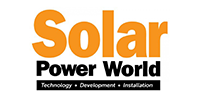 Small-scale, grid-connected energy storage solutions, or “community batteries,” can have a viable business case, supporting the ongoing growth of decentralized energy generation resources. This is one of the key findings of a feasibility study published today by DNV GL, based on work by an industry-wide consortium that includes energy storage firm Alfen and flexibility aggregator Peeeks. The study finds that, given current costs for lithium-ion battery technology and grid expansion projects, community storage can be both economically and socially viable. Furthermore, it outlines a decision-making framework to help grid operators and other stakeholders identify and optimize business models and revenue streams for community storage in any market.
Small-scale, grid-connected energy storage solutions, or “community batteries,” can have a viable business case, supporting the ongoing growth of decentralized energy generation resources. This is one of the key findings of a feasibility study published today by DNV GL, based on work by an industry-wide consortium that includes energy storage firm Alfen and flexibility aggregator Peeeks. The study finds that, given current costs for lithium-ion battery technology and grid expansion projects, community storage can be both economically and socially viable. Furthermore, it outlines a decision-making framework to help grid operators and other stakeholders identify and optimize business models and revenue streams for community storage in any market.
Decentralized energy sources such as rooftop solar panels or individual wind turbines are an important part of the transition to a more sustainable energy future. They can help energy users reduce their bills and contribute to a more sustainable energy mix with lower greenhouse gas emissions. But such resources put extra strain on the local electricity distribution infrastructure, which must be prepared to handle any peaks in generation output.
Distribution network operators (DNOs) can expand the capacity of their network with additional underground cables, but this takes a lot of time and money. An alternative is to install batteries close to decentralized resources to store any excess energy generated and feed it into the grid when demand exceeds supply. Regulations in most countries prevent the network operator owning these distributed storage solutions. Instead an independent player owns the battery facility and sells its capacity as a service to the DNO and other stakeholders.
The report identifies the conditions and stakeholders, such as home owners, energy retailers and network operators, required to make community storage services viable. Furthermore, it shows that a multi-stakeholder approach brings benefits for all parties.





